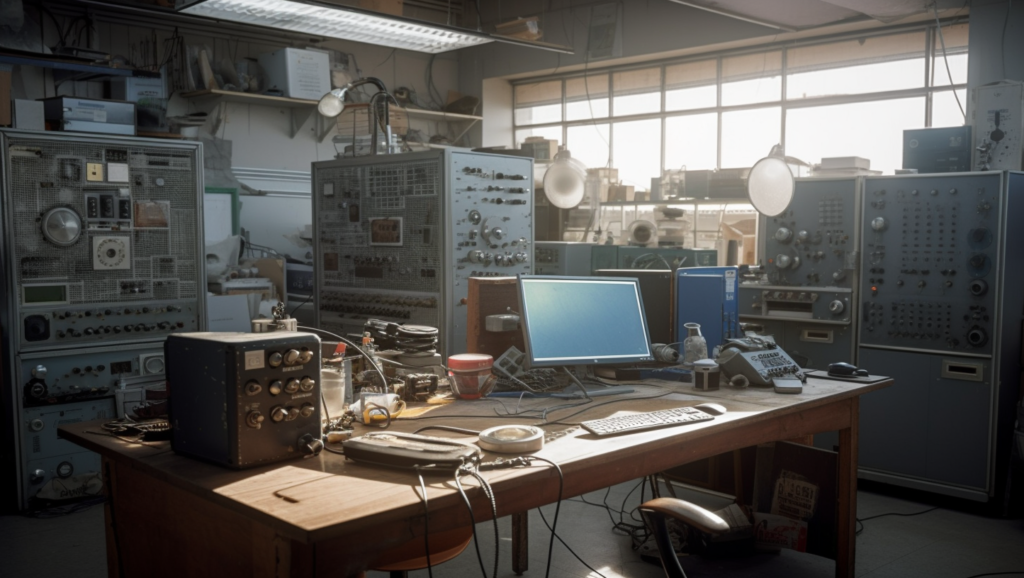Though often used interchangeably, a Faraday cage and a Faraday box are not the same thing. Both are built to block electromagnetic interference (EMI) and isolate electronic devices, but their structure, size, and applications vary greatly.
A Faraday cage is usually a room-sized or mesh-enclosed structure, while a Faraday box is a compact, enclosed unit—often with specialized features designed for precision RF testing. Understanding the difference can help you select the right solution for your engineering, lab, or field needs.
Featured Snippet Answer
A Faraday cage is a large enclosure or mesh structure used to block electromagnetic waves, often for full-room shielding. A Faraday box is a smaller, fully enclosed container designed for hands-on testing or secure storage of electronic devices. Both serve to isolate from RF interference but differ in form, use, and accessibility.
What Is a Faraday Cage?
A Faraday cage is a large enclosure constructed using conductive materials, often in mesh form, that blocks external electromagnetic fields. These structures can range from small desktop chambers to full walk-in rooms. Common use cases include:
- MRI facilities
- Military installations
- RF test rooms
- Secure government communication spaces
The shielding is achieved by surrounding the space with a conductive shell or mesh that redistributes electromagnetic waves away from the interior.

What Is a Faraday Box?
A Faraday box, like those engineered by Ramsey Electronics, is a compact, precision-built enclosure that offers the same shielding benefits in a portable format. Unlike a cage, a Faraday box is designed for:
- Electronics testing and diagnostics
- Signal isolation for mobile or field devices
- Secure RF containment during transport
- Controlled experiments on Bluetooth, Wi-Fi, 5G, and GPS components
Ramsey’s Faraday Cage Box allows physical interaction with test subjects inside the shielded space, a major advantage over larger cage environments.
Comparison: Faraday Cage vs. Faraday Box
| Feature | Faraday Cage | Faraday Box |
| Size | Large / Room-sized | Small / Desktop or Portable |
| Material | Metal mesh or paneling | Metal enclosures with RF seals |
| Use Case | MRI rooms, defense, full isolation | Product testing, labs, mobile field work |
| Hands-on Access | Limited to external only | Allows internal manipulation |
| Portability | Stationary | Portable |
| Signal Range Shielded | Broad | Tuned for lab precision |
Which One Is Right for You?
If you need broad signal isolation in a fixed location—such as a medical or industrial facility—a Faraday cage may be the way to go.
But if you’re an engineer, tester, or technician working with wireless components, a high-quality Faraday box like the one offered by Ramsey Electronics gives you the flexibility and precision your work demands. It’s optimized for RF integrity, ergonomic usability, and test visibility.

Use Cases for Each
Faraday Cage Applications:
- Hospitals (MRI shielding)
- Military command centers
- Broadcasting facilities
- Large-scale EMC testing labs
- Mobile device testing
- RF shielding during product development
- Secure data transport
- 5G signal control labs
- Wireless protocol debugging
Why Choose Ramsey Electronics?
With over 30 years of innovation in shielding technology, Ramsey Electronics designs precision Faraday enclosures trusted by engineers, universities, and military partners.
Our Faraday Cage Box product is uniquely constructed with:
- RF-tight seals and gaskets
- Shielded power and USB pass-throughs
- Visual access without loss of shielding
- Optional filtering upgrades
Explore the full specs and pricing options on our Faraday Box product page.

Final Thoughts
While Faraday cages offer bulk protection for large spaces, Faraday boxes bring electromagnetic shielding to the desktop—making them ideal for modern engineering workflows, secure testing, and R&D labs. Understanding their unique roles ensures your devices get the protection they truly need.Questions about which model fits your use case? Contact our team and we’ll walk you through the right solution.

